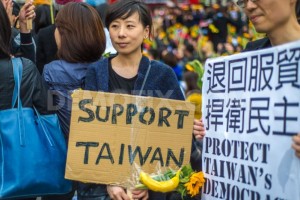 Read on for Article Spotlights from the SEN Archives focusing on SEN News Bites from June. Here, we focus on the significance of performance in the popularization and strengthening of national belonging and nationalist movements. The articles spotlit here are all from 2012’s special edition on ‘Forging the Nation: Performance and Ritual in the (Re)production of Nation’, which itself arose from the 2011 annual ASEN Conference.
Read on for Article Spotlights from the SEN Archives focusing on SEN News Bites from June. Here, we focus on the significance of performance in the popularization and strengthening of national belonging and nationalist movements. The articles spotlit here are all from 2012’s special edition on ‘Forging the Nation: Performance and Ritual in the (Re)production of Nation’, which itself arose from the 2011 annual ASEN Conference.
Chiara De Cesari’s article focuses on how artistic performance has been used to popularize a sense of Palestinian nationalism in the absence of a Palestinian state.
Chiara De Cesari, Anticipatory Representation: Building the Palestinian Nation(-State) through Artistic Performance, Volume 12, Issue 1, 2012, pp. 82-100.
This article aims to illuminate the ways in which artists and cultural producers can participate in forging the nation(-state) by performing its institutions, and by mocking its operations. It explores two experiments in setting up a Palestinian national museum, which are also art projects in themselves. It also discusses the recent Palestinian art biennials, organised by a Palestinian non-governmental organisation in 2007 and 2009 in various locations across the Mediterranean. It is my argument that the experiments with the Palestinian national museum and the biennials constitute a kind of artistic practice that does not just represent or imitate the social world: they are artistic practices that purport to produce new social arrangements – in particular, a set of new ‘state’ (art and cultural) institutions under conditions of statelessness. I also discuss how such a tactic of anticipatory representation, which calls into being, by representing them beforehand, institutions that do not yet (fully) exist, bears resemblance with recent policies adopted by the Palestinian political establishment.
Jasper Dag Tjaden’s essay deals with the significance of the Chilean independence centenary of 1910 for Chilean national identity.
Jasper Dag Tjaden, The (Re-)Construction of ‘National Identity’ through Selective Memory and Mass Ritual Discourse: The Chilean Centenary, 1910, Volume 12, Issue 1, 2012, pp. 45-63.
Social constructivist theories regard the nation as ‘imagined’ (Anderson), ‘invented’ (Hobsbawm and Ranger), and ‘narrated’ (Bhabha). National narratives use mass rituals, performances, and selective national history to reinvigorate collective identity. This article examines the 1910 centennial festivities in Chile as a collective and discursive quest for national identity in a changing society longing for stability. The article uses a discourse analysis approach to study a series of Chilean national history abstracts and coverage of the centennial festivities as presented in Zig-Zag, the most relevant political magazine at the time. The study finds that selective memory and mass ritual discourse are a constitutive part of national identity. Through the process of selective memory, the sources depict Chilean history as a series of linear, coherent, and meaningful events to foster collective identification with the nation. The images of mass ritual discourse of the centennial celebrations reinforce common national characteristics and confidence in the nation. Mass performances provide emotional self-affirmation and an endowment of meaning for individuals within their national group as they restage current national membership with reference to a common past. The study identifies themes of national representation along which the nation is narrated, and suggests that this typology can be generalised beyond the case of Chile. In doing so, this article underscores the need for further research on the concept of discursive national identity formation and its relevance in contemporary politics.
Erika Kuever’s article examines the celebrations around the sixtieth anniversary of the Declaration of the People’s Republic of China, in 2009.
Erika Kuever, Performance, Spectacle, and Visual Poetry in the Sixtieth Anniversary National Day Parade in the People’s Republic of China, Volume 12, Issue 1, 2012, pp. 6-18.
The sixtieth anniversary of the founding of the People’s Republic of China on 1 October 2009 was marked with a massive parade in the heart of Beijing viewed on hundreds of millions of television screens across the nation. English-language media coverage focused primarily on what it saw as the event’s explicit message: the Communist Party’s celebration of the nation’s military might and continued economic growth, and its origins in a coherent and uniquely Chinese ideology. Such coverage largely reflected international fears of China and thus misread the parade’s import and impact on its domestic audience. I argue that the National Day events are better understood as a form of visual poetry that relied on performance to emotionally conflate party, nation, and state. Both the speeches of party leaders and the scripted remarks of state media commentators relied on language and ideas that the Chinese public has heard numerous times. The visual elements of the parade, in contrast, were unprecedented in both scale and spectacle. Hundreds of thousands took part in displays of collective harmony, unified patriotic sentiment, and ethnic unity. The distinctive style and rhythm of the parade depicted a vision of nationhood without the ethnic fractures, labour unrest, and massive inequalities that constitute the greatest threat to the power of the party-state as it embarks on its seventh decade of continuous rule.
Article spotlights compiled by Dr Shane Nagle.




